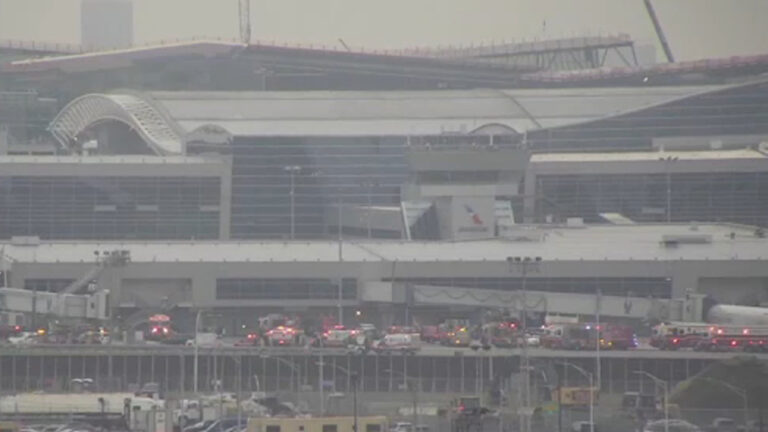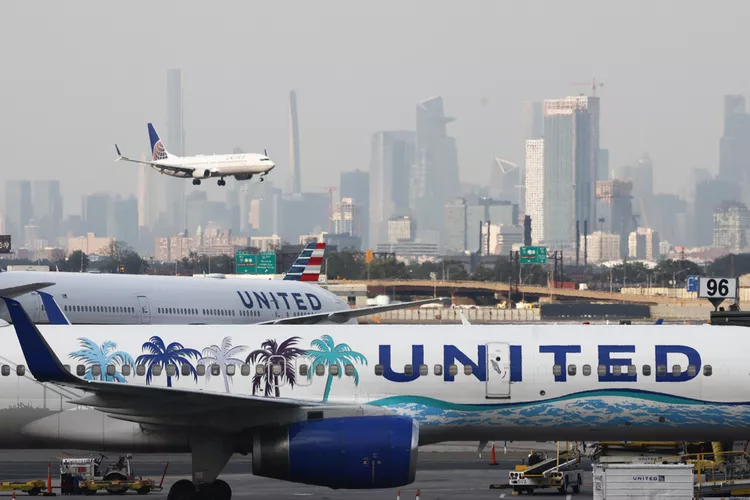United Airlines’ new distribution center near IAH sold to Australian company
United Airlines plans to spend $38 million on improvements to the property, which will be a first-of-its-kind distribution center for the company.
United Airlines has announced an ambitious plan to invest $38 million in the development of a state-of-the-art distribution center. This substantial investment represents a significant step forward for the airline, aiming to enhance its operational efficiency and improve customer service. The facility is poised to be a first-of-its-kind for United Airlines, marking a pivotal moment in the company’s history. This article delves into the details of this investment, exploring its potential impact on the airline and the broader aviation industry.
Background and Rationale
The decision to allocate $38 million towards the new distribution center stems from United Airlines’ commitment to streamline its supply chain operations. In the competitive airline industry, efficient logistics are crucial for maintaining operational reliability and customer satisfaction. By investing in a cutting-edge facility, United Airlines aims to enhance its capabilities in managing aircraft parts, in-flight products, and other essential supplies.
Strategic Location
The choice of location for the new distribution center is a strategic one. While the specific site has not been disclosed, it is expected to be positioned in a key logistics hub, providing easy access to major transportation networks. This location will enable United Airlines to quickly distribute parts and supplies to its network of maintenance bases and airports across the globe. The central location will reduce transit times, leading to quicker turnaround for aircraft maintenance and improved overall operational efficiency.
Technological Advancements
One of the defining features of the new distribution center will be its integration of advanced technologies. United Airlines plans to incorporate automation and state-of-the-art inventory management systems to optimize operations. Automated guided vehicles (AGVs) and robotic arms will be employed to handle and transport goods within the facility, reducing the need for manual labor and minimizing the risk of errors.
Additionally, the distribution center will utilize advanced tracking systems, leveraging RFID (Radio Frequency Identification) and IoT (Internet of Things) technologies. These systems will provide real-time visibility into the location and status of parts and supplies, enabling more accurate forecasting and inventory management. The use of big data analytics will further enhance decision-making processes, allowing United Airlines to anticipate demand and optimize stock levels accordingly.
Environmental Sustainability
United Airlines is also committed to ensuring that the new distribution center aligns with its sustainability goals. The facility will be designed with energy efficiency in mind, incorporating features such as solar panels, energy-efficient lighting, and advanced climate control systems. These measures will help reduce the center’s carbon footprint and contribute to United Airlines’ broader environmental initiatives.
Moreover, the distribution center will prioritize the use of eco-friendly materials and sustainable practices. For instance, the facility will implement recycling programs and seek to minimize waste generation. United Airlines aims to set a benchmark for sustainability in the aviation industry, showcasing that operational efficiency and environmental responsibility can go hand in hand.
Impact on Operations
The new distribution center is expected to have a profound impact on United Airlines’ operations. By centralizing its supply chain management, the airline will be able to reduce redundancies and improve coordination across its various departments. This will lead to more efficient maintenance processes, reducing aircraft downtime and enhancing fleet availability.
In addition to improving maintenance operations, the distribution center will also enhance the airline’s in-flight services. With a more streamlined supply chain, United Airlines will be able to ensure that in-flight products, such as meals and amenities, are consistently stocked and of high quality. This will contribute to a better overall passenger experience, strengthening the airline’s competitive position.
Economic Impact
The construction and operation of the new distribution center will also have a positive economic impact on the surrounding community. The project will create numerous construction jobs, providing a boost to the local economy. Once operational, the facility will generate additional employment opportunities in logistics, technology, and management roles.
Moreover, the presence of a major distribution center is likely to attract other businesses and investments to the area. Suppliers, logistics companies, and related industries may choose to establish operations nearby, creating a ripple effect that stimulates further economic growth. United Airlines’ investment thus has the potential to transform the local economy, fostering a vibrant business ecosystem.
Challenges and Considerations
While the $38 million investment in the new distribution center represents a significant opportunity for United Airlines, it is not without challenges. The successful execution of the project will require meticulous planning and coordination. Ensuring that the facility is completed on time and within budget will be crucial to realizing the anticipated benefits.
Additionally, the integration of advanced technologies poses its own set of challenges. United Airlines will need to invest in training programs to equip its workforce with the necessary skills to operate and maintain the new systems. Change management strategies will also be essential to ensure a smooth transition and to address any resistance to the adoption of new technologies.
Future Prospects
Looking ahead, the establishment of the new distribution center positions United Airlines for future growth and innovation. The facility will serve as a foundation for further advancements in supply chain management and operational efficiency. United Airlines can leverage the data and insights gained from the center to continually refine its processes and stay ahead of industry trends.
The investment also aligns with United Airlines’ broader strategic goals. As the aviation industry evolves, airlines are increasingly focusing on enhancing their operational resilience and adaptability. The new distribution center will enable United Airlines to respond more effectively to disruptions, whether they arise from supply chain issues, regulatory changes, or unexpected events.
United Airlines’ $38 million investment in a new distribution center marks a transformative step in the company’s journey toward operational excellence and sustainability. By embracing advanced technologies, strategic location, and environmental responsibility, the airline is setting a new standard for the industry. The facility promises to enhance United Airlines’ operational efficiency, improve customer service, and contribute to economic growth in the surrounding community.
As the aviation industry continues to navigate challenges and opportunities, United Airlines’ forward-thinking approach serves as a model for others to follow. The new distribution center is not just an investment in infrastructure; it is an investment in the future, positioning United Airlines to thrive in an increasingly competitive and dynamic landscape.






